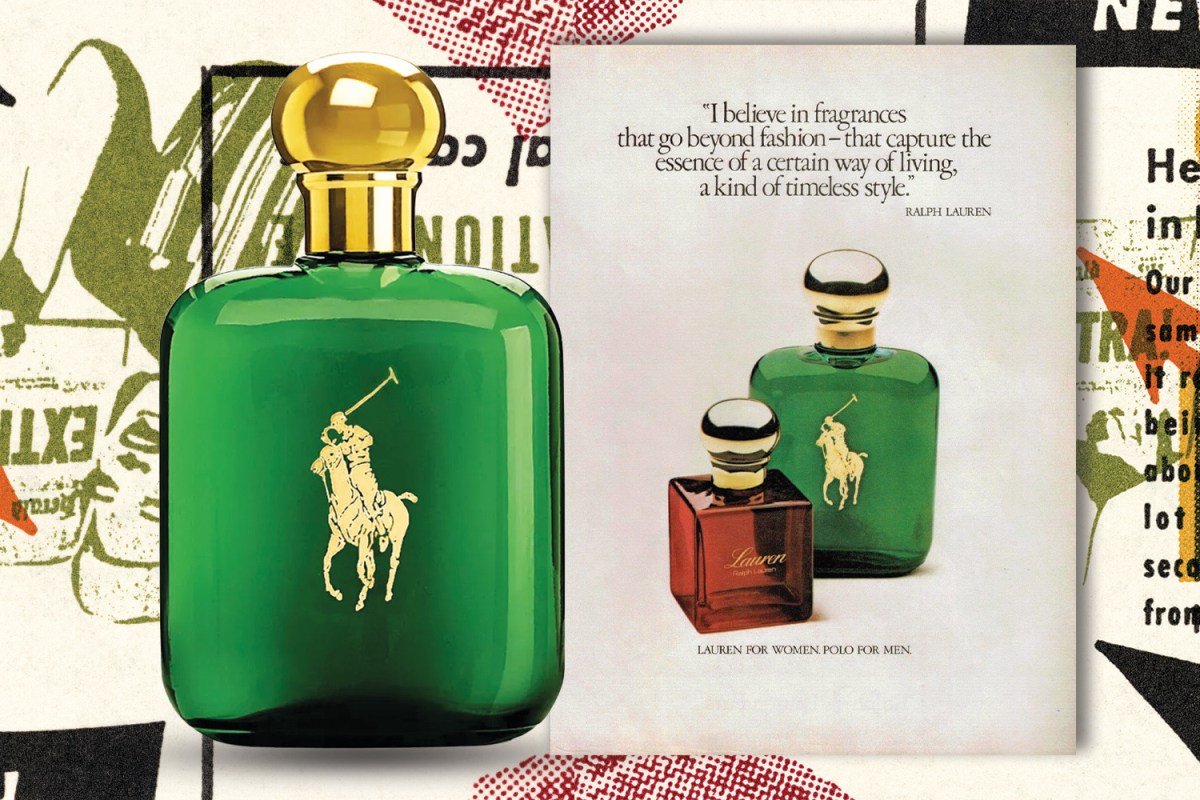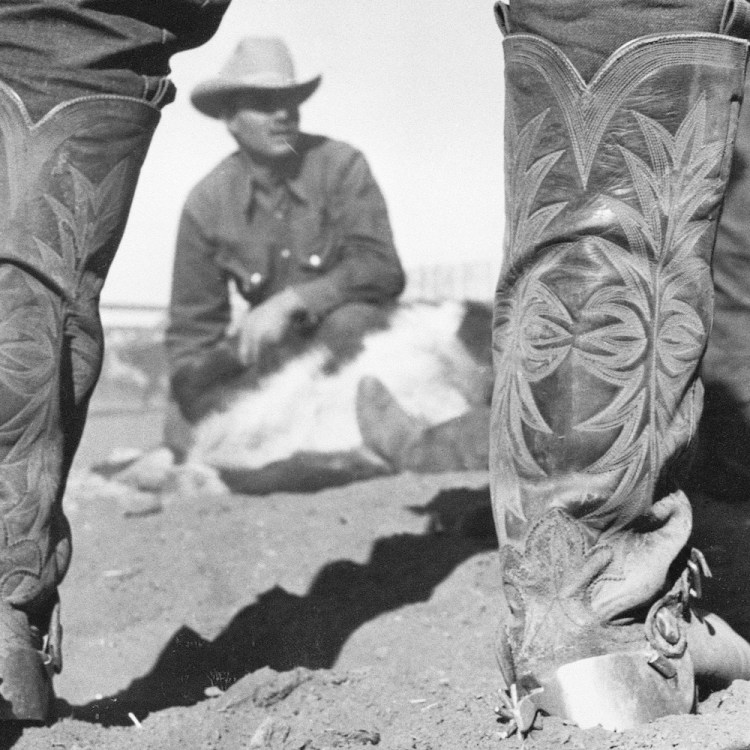In the fall of 2018, a friend gave me first dibs on a few items he’d earmarked for eBay. Among them was an 80%-full bottle of Polo fragrance he’d noted was an “older formula,” though he was unsure of its exact vintage. For $25 it was mine, and I soon received a small green flask with a brass-colored stopper in the mail.
Inside was a strange, potent scent completely unlike the spicy-sweet Polo Black I’d worn in college. In fact, it was totally alien to my 27-year-old sense of smell: a dark, dank masculine eau de toilette that felt equal parts forest floor, leather armchair and freshly Pine-Sol’d high school gym. It was weird, and I loved it (my then-girlfriend disagreed but married me nonetheless),
Sometime after I’d begun dipping into the bottle, I visited my local Ralph Lauren store and saw the same green vessel (minus years of wear) sitting on the fragrance counter. I applied it to my wrists, and discerned that it was not at all like the juice back home. While still dark and masculine — smoky and piney, like an ashtray left in the woods — it didn’t have that same weird, wet, green note that characterized mine.
It didn’t take long for me to realize that the scent launched in 1978 as Polo — but often referred to as “Polo Green” after the color of its packaging — had undergone many reformulations over the decades. Fragrance-nerd websites like BaseNotes have threads dedicated to the scent that run on for dozens of pages, where obsessives share notes on how to date a given bottle’s production year based on barcodes, and speculate on how many bottles of “vintage era” Polo remain.
You can learn a great deal from strangers on the internet, but at the end of the day, that’s what they remain. Seeking an expert, I rang up Laird Mackintosh, the Canadian actor behind the popular re-selling account @vintageprl. Luckily, I learned that his knowledge of Polo lore extended to its fragrances, and was soon brought up to speed on Polo’s origins and its various “eras.”
Ever Wonder What Colognes Bowie, Sinatra and Bogart Wore?
A compendium of notable gents and their scents of choiceThe story begins in 1976, when Ralph Lauren decided to enter the fragrance business almost 10 years after establishing his clothing brand. Though courted by the likes of Estée Lauder, Lauren landed on a strange bedfellow for his first foray into scent: Warner Communications. Together, the designer and the media conglomerate formed their own company, Warner/Lauren Ltd., which bore fruit in 1978 with the simultaneous launch of Polo for men and Lauren for women.
Warner/Lauren would continue to make Polo until 1984, when Warner Communication’s poor investments — including a failed gambit on Atari — saw it sold to Cosmair, which was then the American subdivision of French cosmetic giant L’Oreal. Cosmair produced the scent until 2000, when Cosmair itself was folded back into L’Oreal, which continues to make Polo fragrances today under the name Luxury Products, LLC.
Throughout these three “eras,” Polo’s look has remained virtually unchanged. Bottles belonging to the Warner/Cosmair years—sometimes collectively categorized as the “vintage era” — may be identified by their bottom sticker. In the case of a Warner bottle it will read “Warner/Lauren LTD.,” while a Cosmair declares “Cosmair Inc.” in smaller font.
Or more subjectively, they can be differentiated by scent. In Mackintosh’s view, there isn’t a great gulf between the Warner and Cosmair bottlings. Each are characterized by a green scent he identifies as “wet moss,” while the modern-era fragrance is brighter and pinier, and in his view, a bit more synthetic-smelling.
Fragrances evolve, and it should come as little surprise that Polo’s profile has shifted with time. But changes in ownership aside, there’s a more concrete explanation for its changing character: the elimination of oakmoss from the fragrance industry.
That is a subject worth thousands of words, but in a nutshell, oakmoss — a central ingredient in the chypre family of fragrances, a woodsy categorization to which Polo belongs — has been largely regulated out of the industry, as it was linked to allergic reactions including skin rashes. While the International Fragrance Association began sounding the alarm on the natural ingredient in the ‘90s, it issued a self-regulating edict in 2003 that eventually reduced oakmoss’s composition to no more than 0.1% of a scent.
The case could be made that this change — and less so the passing of the torch from Warner/Lauren to Cosmair to L’Oreal — is what really divides Polo into “past” and “present.”
“People say, ‘I went into the department store and I wanted to smell Polo again, and I remembered it differently,” Mackintosh says. “That’s what’s happening, because it does smell different.”
I’ve had my own bottle of Cosmair Polo for five years but couldn’t compare it to Warner’s iteration. While I’d never caught a whiff, BaseNotes posters sometimes characterized the Warner product as being woodier, smokier and all-around stronger than its Cosmair cousin.
While I was naturally curious to try the Warner, the handful of bottles identified as such on eBay run in the hundreds of dollars, with 4oz vessels listed in “new” condition going for $400 or more. So, I took a chance on a 1.5oz Warner splash bottle that was listed for $100 with about 70% of its juice left, accepting the risk that the opened cologne might have “turned” in improper storage, or at worst, been filled with water by a huckster.
I’m by no means a fragrance expert. But in an amateur sniff-test with Warner on one wrist and Cosmair on the other, I found that they were very much of the same “family,” with that all-important wet-forest feel, though the Warner seemed darker and more potent with a dank, charred note something like the last few inches of a wet cigar or a campfire extinguished by rainfall.
Given its shorter production period and general age, Warner Polo is tough to find. Cosmair, with its decade-and-a-half reign as a best-selling fragrance, is a more common sight on the second-hand market but still goes for a premium if the seller realizes what they’ve got.
It’s likely that thousands of bottles of Cosmair Polo in various states of fullness remain, with many owners unaware that a much sought-after and discontinued fragrance idles in their medicine cabinet. A simple search for “polo green cologne” turns up close to 500 eBay results at the time of this writing, with likely scores of those belonging to the Warner and Cosmair eras. And in the course of researching this article, a friend patient enough to listen to my spiel returned to her parent’s house to find her dad’s mighty, 8oz bottle of Cosmair Polo in a downstairs bathroom.
Like the clothing brand that birthed it, Polo Green has existed long enough for its fans to dedicate countless hours and precious treasure excavating what they believe to be the “truest” expression of itself. Which could be interpreted be a testament to the lasting appeal of both Polo the fragrance and Polo the label.
“People are interested in the early versions of the Polo fragrances for the same reason that they want to find vintage Polo clothes now,” Mackintosh says. “It’s kind of fun.”
This article was featured in the InsideHook newsletter. Sign up now.
























